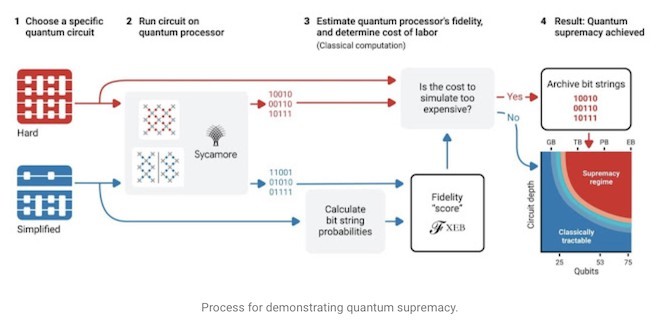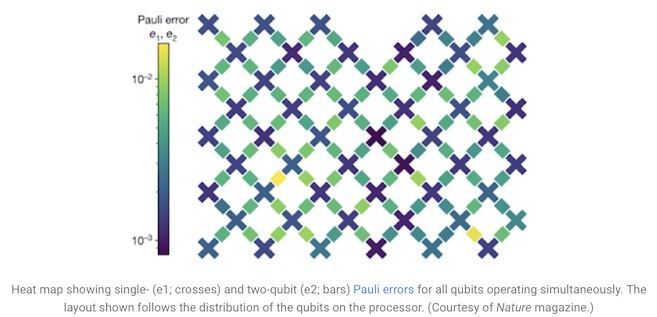
Sycamore is a quantum processor created by Google Inc.’s Artificial Intelligence division. It comprises 53 q-bits, while actually having 54 q-bits.
In 2019, Sycamore completed a task in 200 seconds that Google claimed, in a Nature paper, would take a state-of-the-art supercomputer 10,000 years to finish. Thus, Google claimed to have achieved quantum supremacy. To estimate the time that would be taken by a classical supercomputer, Google ran portions of the quantum circuit simulation on the Summit, the most powerful classical computer in the world. Later, IBM made a counter-argument, claiming that the task would only take 2.5 days on a classical system like Summit. If Google’s claims are upheld, then it would represent an exponential leap in computing power.
In August 2020 quantum engineers working for Google reported the largest chemical simulation on a quantum computer – a Hartree-Fock approximation with Sycamore paired with a classical computer that analyzed results to provide new parameters for the 12-qubit system.
In December 2020, the Chinese photon-based Jiuzhang processor, developed by USTC, achieved a processing power of 76 qubits and was 10 billion times faster than Sycamore, making it the second computer to attain quantum supremacy.
Google described the Sycamore Quantum Computer flow separately, as follows:

Lattice interconnect of Q-Bits, suggesting that four neighbor q-bits are effected for every q-bit state change with a lattice-like interconnect:

A description of this machine has been identified as having two registers for the states; current and prior.
Web Reference: https://en.wikipedia.org/wiki/Sycamore_processor